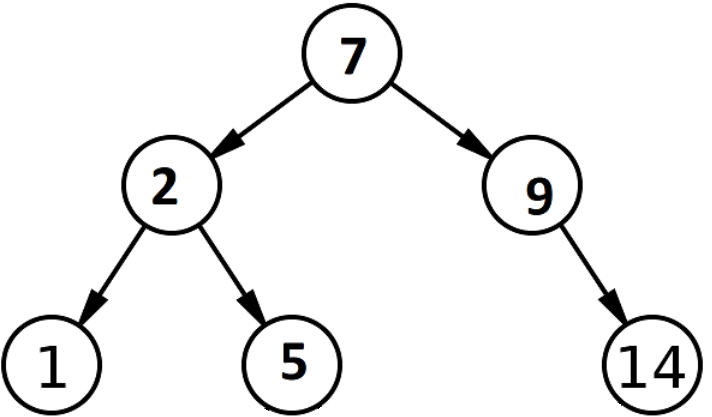作业5: 面向对象编程, 链表, 树
Homework 5: Object-Oriented Programming, Linked Lists, Trees
Due by 11:59pm on Monday, October 26
查看英文原文
说明
下载 hw05.zip。在压缩包中,你会找到一个名为 hw05.py 的文件,以及一份 ok
自动评分器。
提交:完成后使用python3 ok
--submit来提交代码。你可以在截止日期前多次提交;只有最后一次提交会被评分。请检查你是否成功提交了代码到okpy.org。更多提交作业的说明请参见Lab0。
使用Ok:如果你对使用Ok有任何疑问,请参考本指南。
阅读材料:以下阅读材料可能对你有帮助
评分:作业评分基于正确性。每个错误的问题将使总分减少一分。课程大纲中有作业恢复政策。 本次作业满分为2分。
必答题
面向对象编程 (OOP)
Q1: 自动售货机
创建一个名为 VendingMachine 的类,它表示一个用于售卖某些商品的自动售货机。
VendingMachine 对象应返回描述其交互过程的字符串。
请补全 VendingMachine 类,添加适当的属性和方法,使其行为符合以下的 doctests:
class VendingMachine:
"""A vending machine that vends some product for some price.
>>> v = VendingMachine('candy', 10)
>>> v.vend()
'Inventory empty. Restocking required.'
>>> v.add_funds(15)
'Inventory empty. Restocking required. Here is your $15.'
>>> v.restock(2)
'Current candy stock: 2'
>>> v.vend()
'You must add $10 more funds.'
>>> v.add_funds(7)
'Current balance: $7'
>>> v.vend()
'You must add $3 more funds.'
>>> v.add_funds(5)
'Current balance: $12'
>>> v.vend()
'Here is your candy and $2 change.'
>>> v.add_funds(10)
'Current balance: $10'
>>> v.vend()
'Here is your candy.'
>>> v.add_funds(15)
'Inventory empty. Restocking required. Here is your $15.'
>>> w = VendingMachine('soda', 2)
>>> w.restock(3)
'Current soda stock: 3'
>>> w.restock(3)
'Current soda stock: 6'
>>> w.add_funds(2)
'Current balance: $2'
>>> w.vend()
'Here is your soda.'
"""
"*** YOUR CODE HERE ***"
Python 字符串格式化语法 可能对你有用。 下面是一个示例:
>>> ten, twenty, thirty = 10, 'twenty', [30]
>>> '{0} plus {1} is {2}'.format(ten, twenty, thirty)
'10 plus twenty is [30]'使用 Ok 来测试你的代码:
python3 ok -q VendingMachine --localQ2: 铸币
完成 Mint 和 Coin 类,使铸币厂创建的硬币具有正确的年份和价值。
- 每个
Mint实例都有一个year标记。update方法将year标记设置为Mint类中的current_year类属性的值。 create方法接受Coin的子类,并返回该类的一个实例,该实例的年份标记为当前铸币厂mint的年份 (如果mint未调用update方法,其年份可能不同于Mint.current_year)。Coin类的worth方法返回硬币的面值cents,并且对于超过 50 年的硬币, 每多一年增加 1 cent。硬币的年龄可以通过用Mint类的current_year类属性减去硬币的年份来计算。
class Mint:
"""A mint creates coins by stamping on years.
The update method sets the mint's stamp to Mint.current_year.
>>> mint = Mint()
>>> mint.year
2020
>>> dime = mint.create(Dime)
>>> dime.year
2020
>>> Mint.current_year = 2100 # Time passes
>>> nickel = mint.create(Nickel)
>>> nickel.year # The mint has not updated its stamp yet
2020
>>> nickel.worth() # 5 cents + (80 - 50 years)
35
>>> mint.update() # The mint's year is updated to 2100
>>> Mint.current_year = 2175 # More time passes
>>> mint.create(Dime).worth() # 10 cents + (75 - 50 years)
35
>>> Mint().create(Dime).worth() # A new mint has the current year
10
>>> dime.worth() # 10 cents + (155 - 50 years)
115
>>> Dime.cents = 20 # Upgrade all dimes!
>>> dime.worth() # 20 cents + (155 - 50 years)
125
"""
current_year = 2020
def __init__(self):
self.update()
def create(self, kind):
"*** YOUR CODE HERE ***"
def update(self):
"*** YOUR CODE HERE ***"
class Coin:
def __init__(self, year):
self.year = year
def worth(self):
"*** YOUR CODE HERE ***"
class Nickel(Coin):
cents = 5
class Dime(Coin):
cents = 10使用 Ok 来测试你的代码:
python3 ok -q Mint --local链表
Q3: 存储数位
编写一个函数 store_digits,它接收一个整数 n,并返回一个链表,
该链表的每个元素都是 n 的一个数位。
注意:不要使用任何字符串操作函数,如
str和reversed。
def store_digits(n):
"""Stores the digits of a positive number n in a linked list.
>>> s = store_digits(1)
>>> s
Link(1)
>>> store_digits(2345)
Link(2, Link(3, Link(4, Link(5))))
>>> store_digits(876)
Link(8, Link(7, Link(6)))
>>> # a check for restricted functions
>>> import inspect, re
>>> cleaned = re.sub(r"#.*\\n", '', re.sub(r'"{3}[\s\S]*?"{3}', '', inspect.getsource(store_digits)))
>>> print("Do not use str or reversed!") if any([r in cleaned for r in ["str", "reversed"]]) else None
"""
"*** YOUR CODE HERE ***"
使用 Ok 来测试你的代码:
python3 ok -q store_digits --local附加题
树
Q4: 判断二叉搜索树
编写一个函数 is_bst,它接收一棵树 t,并在且仅在 t 是一棵有效的二叉搜索树时返回
True。二叉搜索树需满足以下条件:
- 每个节点最多有两个子节点(叶子节点自动视为有效的二叉搜索树)。
- 所有子树本身也是有效的二叉搜索树。
- 对于每个节点,该节点左子树中的所有值小于等于该节点的标签。
- 对于每个节点,该节点右子树中的所有值大于该节点的标签。
以下是一个二叉搜索树的示例:

请注意,如果一个节点只有一个子节点,该子节点可以被视为左子节点或右子节点。你需要将这一点考虑在内。
提示: 编写辅助函数 bst_min 和 bst_max 可能会有所帮助,它们分别返回一棵树的最小值和最大值(前提是该树是有效的二叉搜索树)。
def is_bst(t):
"""Returns True if the Tree t has the structure of a valid BST.
>>> t1 = Tree(6, [Tree(2, [Tree(1), Tree(4)]), Tree(7, [Tree(7), Tree(8)])])
>>> is_bst(t1)
True
>>> t2 = Tree(8, [Tree(2, [Tree(9), Tree(1)]), Tree(3, [Tree(6)]), Tree(5)])
>>> is_bst(t2)
False
>>> t3 = Tree(6, [Tree(2, [Tree(4), Tree(1)]), Tree(7, [Tree(7), Tree(8)])])
>>> is_bst(t3)
False
>>> t4 = Tree(1, [Tree(2, [Tree(3, [Tree(4)])])])
>>> is_bst(t4)
True
>>> t5 = Tree(1, [Tree(0, [Tree(-1, [Tree(-2)])])])
>>> is_bst(t5)
True
>>> t6 = Tree(1, [Tree(4, [Tree(2, [Tree(3)])])])
>>> is_bst(t6)
True
>>> t7 = Tree(2, [Tree(1, [Tree(5)]), Tree(4)])
>>> is_bst(t7)
False
"""
"*** YOUR CODE HERE ***"
使用 Ok 来测试你的代码:
python3 ok -q is_bst --localQ5: 前序遍历
定义函数 preorder,该函数接受一棵树作为参数,并返回一个列表,包含树中所有的元素,顺序与 print_tree 打印它们的顺序相同。
下图展示了节点的打印顺序,箭头表示函数调用的顺序。

注意:这种节点的遍历顺序称为前序遍历(preorder traversal)。
def preorder(t):
"""Return a list of the entries in this tree in the order that they
would be visited by a preorder traversal (see problem description).
>>> numbers = Tree(1, [Tree(2), Tree(3, [Tree(4), Tree(5)]), Tree(6, [Tree(7)])])
>>> preorder(numbers)
[1, 2, 3, 4, 5, 6, 7]
>>> preorder(Tree(2, [Tree(4, [Tree(6)])]))
[2, 4, 6]
"""
"*** YOUR CODE HERE ***"
使用 Ok 来测试你的代码:
python3 ok -q preorder --local生成器/树
Q6: 生成路径
定义一个生成器函数 path_yielder,它接受一棵树 t 和一个值 value,返回一个生成器对象,该生成器会生成从
t 的根节点到标签为 value 的节点的所有路径。
t 是使用类实现的,而不是基于函数的ADT(抽象数据类型)。
每条路径应该以列表的形式表示,其中包含树中沿路径的所有标签。路径的生成顺序可以是任意的。
我们已经为你提供了一个(部分)代码框架。你不一定要使用这个框架,但如果你的实现与其有较大不同,你可能需要思考如何调整你的代码以适配该框架。
def path_yielder(t, value):
"""Yields all possible paths from the root of t to a node with the label value
as a list.
>>> t1 = Tree(1, [Tree(2, [Tree(3), Tree(4, [Tree(6)]), Tree(5)]), Tree(5)])
>>> print(t1)
1
2
3
4
6
5
5
>>> next(path_yielder(t1, 6))
[1, 2, 4, 6]
>>> path_to_5 = path_yielder(t1, 5)
>>> sorted(list(path_to_5))
[[1, 2, 5], [1, 5]]
>>> t2 = Tree(0, [Tree(2, [t1])])
>>> print(t2)
0
2
1
2
3
4
6
5
5
>>> path_to_2 = path_yielder(t2, 2)
>>> sorted(list(path_to_2))
[[0, 2], [0, 2, 1, 2]]
"""
"*** YOUR CODE HERE ***"
for _______________ in _________________:
for _______________ in _________________:
"*** YOUR CODE HERE ***"
提示:如果你不知道如何开始,可以思考如果这不是一个生成器函数,你会如何解决这个问题?你的递归调用会是什么样的?在一个生成器函数中,如果你在函数体内进行“递归调用”,会发生什么?
使用 Ok 来测试你的代码:
python3 ok -q path_yielder --local